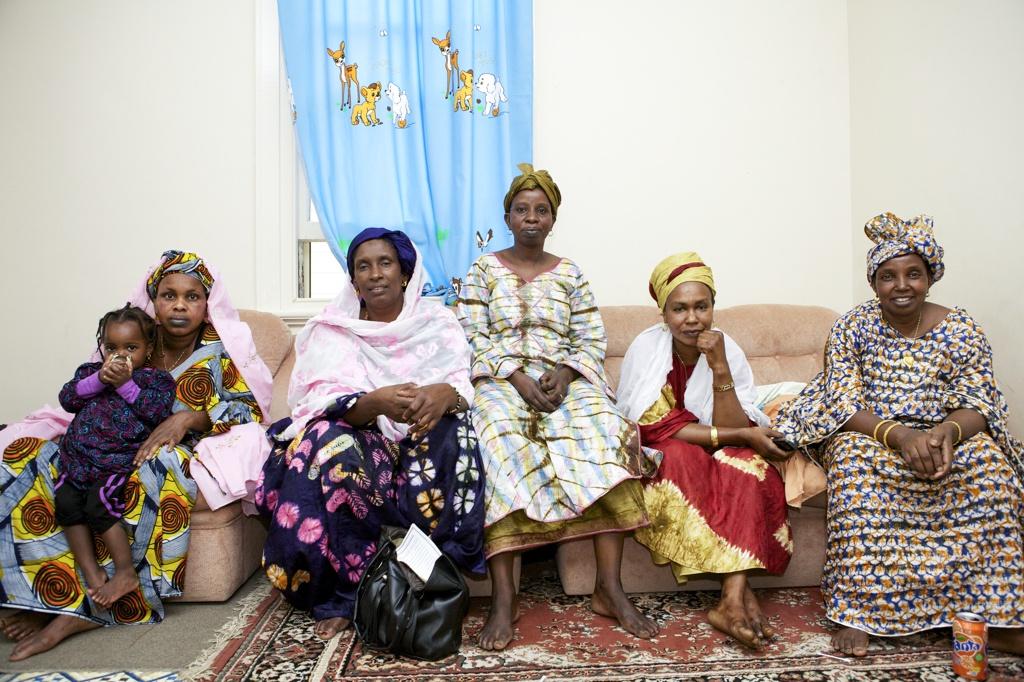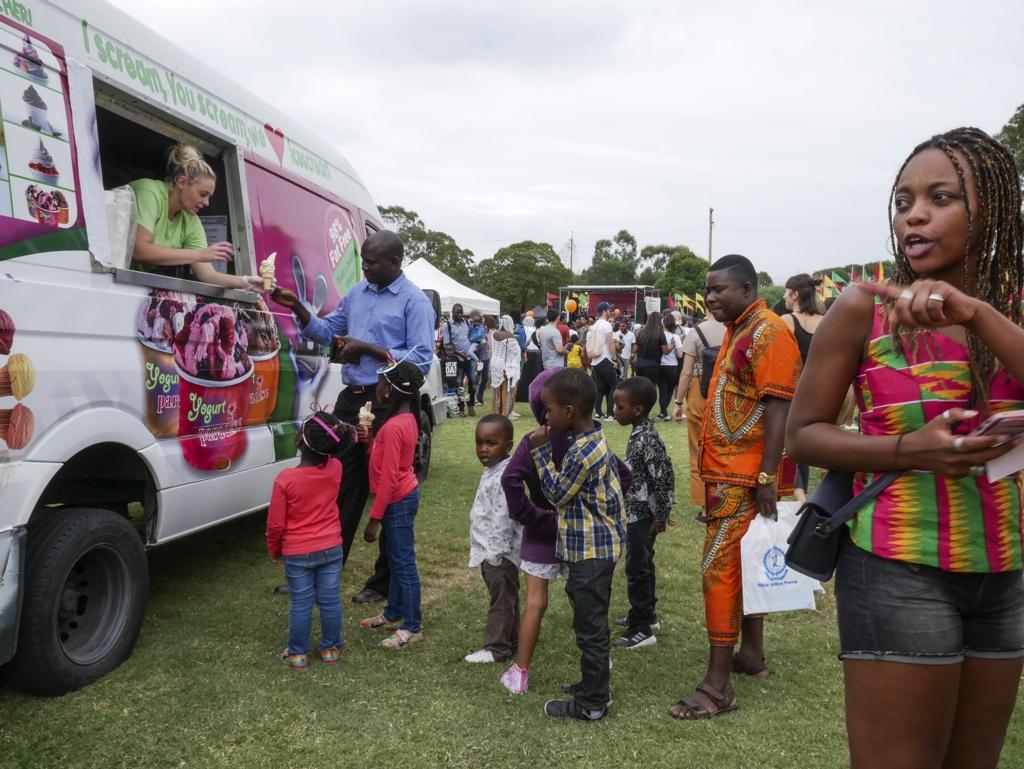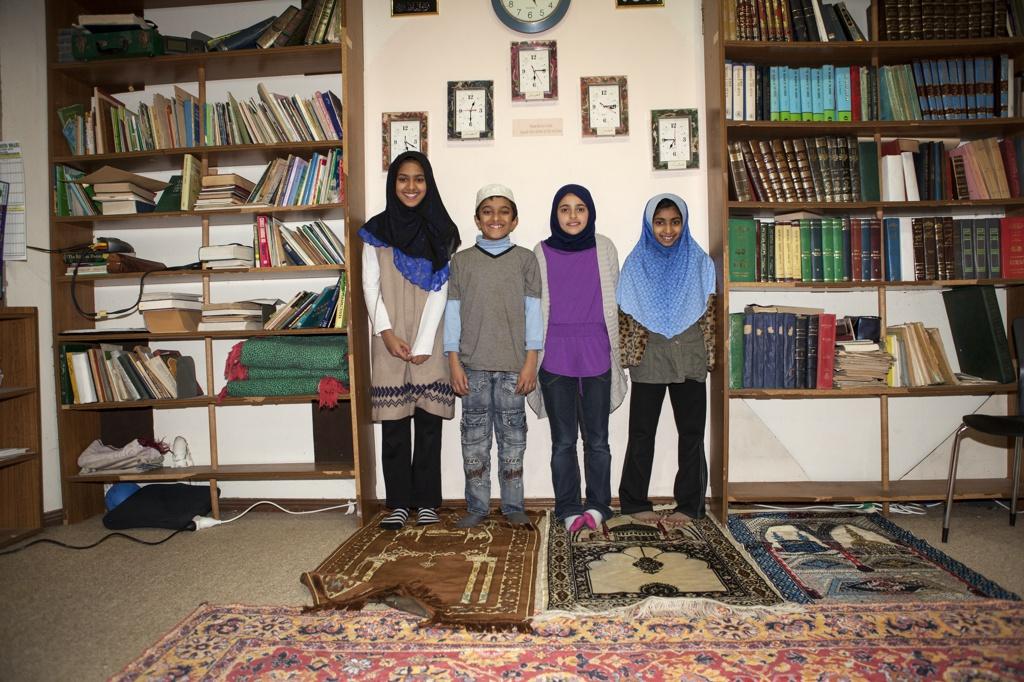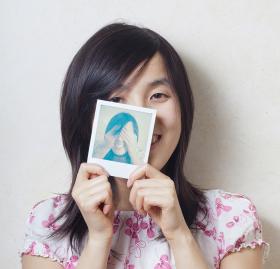I moved to Sydney in 2011 with a plan to stay for 12 months. Six years later, I had an appointment with the Department of Immigration to finalise my citizenship application. The man who called me to his desk gave an officious nod as he took my sheaf of identity documents.
‘That’s the first time I’ve seen a marriage certificate from Manitoba,’ he said, seeming to break out of his routine script. ‘You’re about the 4800th person I’ve processed. That’s me personally. There are people here who have done a lot more.’
‘It must be fascinating,’ I said, ‘seeing all these different people.’
‘It would be if I had time to talk to them, but I have to process you and move on. Everyone has a story to tell though. I often meet people at the end of a long journey. For some it’s been a terrible struggle. For others, it’s been easy. For me, it was an accident.’
I leaned in, keen to hear how one accidentally becomes Australian. But my paperwork was done, and he sent me on.
People shift across the globe like grains of sand on dunes, blown by the winds of violence and poverty and, as in my more privileged case, deep-rooted restlessness. We settle into existing communities, and sometimes, collect together to forge new ones.
Growing up in Canada, my dad knew his grandfather, Paravon, was from ‘the old country’. (He makes air quotes as he shares this.) But he and I didn’t learn the details of Paravon’s journey until decades after his death. Horse hooves had approached the family village in the night, we discovered, waking Paravon, who was perhaps 11 years old. He climbed into a tree for a better view of the approaching Turkish soldiers. While he hid there, everyone in the village was slaughtered and their homes set alight.
Paravon ended up in an orphanage, and then, a few years later, on a ship to Canada, where one remaining uncle had worked since before the state-orchestrated massacres that became known as the Armenian genocide. Paravon arrived with his wife, Mariam, whose story is even more incomplete. Her family had left her, their youngest child, with Turkish friends, who risked their lives by protecting her. Perhaps that became too dangerous; whatever the reason, Mariam was in the orphanage when she met Paravon.
In 1920 the couple arrived in St Catharines, on the shore of Lake Ontario, where a handful of Armenian factory workers was growing into a community of survivors. They helped to build the first Armenian church in Canada. Eight decades later, I attended my grandfather’s funeral at that church, the priest speaking in Armenian, a censer swinging.
I didn’t grow up near St Catharines. In fact, Sydney was the first place I lived where there was an Armenian community. I volunteered with the Armenian Art Advisory Council, feeling chuffed every time their meetings slipped into Armenian, even though I didn’t understand.
Because Australia's immigration laws relaxed a little after the Second World War, in the 1950s and 60s an influx of Armenians migrated from countries including Jordan and Lebanon, where they'd found uncertain refuge after the genocide. Their family narratives contain layers of dislocation. Australia’s first Armenian church was founded in 1957, in Surry Hills.
The State Library’s collection features photographs taken between 1989 and 1996 by Armenian photographer Teny Aghamalian. A christening service at the Armenian Apostolic Church in Chatswood — the priests in their elaborate robes — is juxtaposed with Armenians at home, in their kitchens and loungerooms. Seeing them fills me with warmth; this could be my father’s extended family. There’s nothing that makes the photos particularly Australian, until the last in the series, which shows an anti-Pauline Hanson demonstration.
I see in Sydney the community vitality that existed in St Catharines when Paravon and Mariam were raising their six children: Armenian schools, church feasts, magazines, radio shows, art exhibitions and sporting events. But St Catharines is a small city, and by the time my dad was growing up, the community had started its slow fade into history. It requires a lot of effort to maintain a culture distinct from the majority, and people like my grandfather had married odars — outsiders, non-Armenians — which meant the language wasn’t spoken at home.
In my experience, it’s language that binds. When I lived in Korea, I clung to fellow English speakers out of social necessity. When I lived in Peru and Mexico, my Spanish became conversational but I never felt fully myself unless I was talking — and joking — in my first language.
Being a native English speaker makes it simpler to blend Australianness into my identity. Even with our nations’ shared heritage, however, there are cultural gaps. I find myself translating and decoding, adjusting my behaviour. After I published a memoir on becoming Australian, a reader from Peru asked me to speak to her Latina book club. ‘This would mean a lot to us, especially as migrants,’ she said, ‘understanding that if a Canadian had issues when moving to Australia, then it is not that bad for Latin Americans to find Australian society a bit different.’
All these things are on my mind the day I meet Samuel Majok, an Anglican minister and refugee from South Sudan, who lives in Blacktown. Paravon and Mariam likely couldn’t have imagined what they might have in common with a South Sudanese community in Australia, but three generations later, as I attend a church service delivered in Dinka, I’m captivated by the parallels to my Armenian family’s early years in Canada, their efforts to heal their community through their faith. The room is full of young families, sitting on socially distanced plastic chairs, their eyes sneaking from the sermonising minister to me.
Afterwards, Reverend Samuel and I sit down to talk with his friend, D-Mo Zajac. Aside from their mirrored smiles, they make a visual contrast: Samuel is tall, with round cheeks and dark skin, while D-Mo is slender, blond and Polish. (A coincidence: my father’s mother was Polish, though on marrying she left her family to fold herself into the Armenian community. Speaking to D-Mo, I wonder about the lost traces of my Polish heritage.)
Born in 1982, Samuel was the third of his parents’ 10 children. They lived in the village of Wanglei until he was nine, when Sudan’s second civil war reached them. ‘Children were thrown in the fire in the nearby village,’ he recalls. His family fled.
For the next six months, they were on the road by 6 am every day, walking south, away from the fighting. The war followed. Persistent bombing forced them to cross into Kenya. Samuel spent the next 15 years in Kakuma Refugee Camp.
He describes Kakuma as ‘people in a warehouse’. Even with a ration card, they ate one meal every two days. Later, his father was murdered, likely because of his work training Christian ministers. When he first started sharing his story, Samuel says, ‘I couldn’t finish this part.’ The murder remains unsolved.
His father’s closest friend had resettled in the southern Sydney suburb of Caringbah, and when his church community learned of the murder, they worked to bring the family to Australia. But they couldn’t apply for all 11 family members together, so it was Samuel’s mother and her daughters who arrived in Western Sydney in 2004. Three years later, he and his brothers followed, with the exception of one sister, who lives in Nairobi, and his eldest brother, who remains among almost 200,000 people at Kakuma.
Listening, I can trace Paravon and Mariam’s story — the flukes of survival, the years of starvation, the jarring asylum in a previously unimagined place, and the efforts to rebuild community.
It was D-Mo who introduced me to Reverend Samuel. She works as a photographer, and the Library’s collection includes her photos documenting culturally diverse festivals, protest meetings, rallies and religious events. ‘Photography is about driving connection,’ she says.
D-Mo moved to Australia in 2006. That year, at an anti-racism rally, she befriended two South Sudanese men. The first time she visited their church, she wanted to take photos, but people warned her off. She spent six months building a relationship, visiting people’s homes and singing and cooking with them. Now her photos span more than a decade, and her ties to the community runs deep. Samuel baptised her youngest son.
He believes D-Mo’s work connects people to the South Sudanese story. ‘Without her, maybe other people wouldn’t know.’
While he’s grateful for his life in Australia, especially its safety, he struggles with the cultural gap, the different food and clothing, even the ways people greet each other. ‘It’s hard to say hello to Aussie neighbours,’ he says. D-Mo echoes this. ‘Australian communities feel segregated — not racially, but personally.’
Samuel describes himself and his community as ‘becoming more Australian. We’re influenced by the second generation. As parents, we always worry our kids will become Australian.’
Armenians have a term for this diasporan process of losing cultural identity over generations, as has happened in my family. They call it white genocide.
But Samuel’s plan for his seven children, now aged between two months and 10 years old, is for them to attend high school in Kenya or Uganda, studying in English at an international school, and staying with family over school holidays, immersed in their language and culture. He knows other South Sudanese families that do this.
‘This way,’ he says, ‘they wouldn’t take their life in Australia for granted.’
I wonder who my dad or my grandfather might have been, had they been able to spend their high school years in Armenia.
For my part, the 10 years I spent researching my family and the intergenerational impacts of genocide gives me slivers of insight into Samuel’s experience, as well as the descendants of other genocide survivors, like D-Mo, who learned later in life of her mother’s Jewish ancestry.
I feel that connection agtain when I speak to Maria Savvidis about her archival work at the Library, and she shares the story of her mother and father, Greek migrants who met in Sydney. Her father is Pontian Greek, from Anatolia, another group targeted by the Ottoman Turks during and after the First World War.
Maria grew up speaking Greek. ‘The only time I spent with Australians was at school,’ she says. She felt oddly at home in Turkey, where she recognised words her father had used. It reminded me of something an aunt told me, that when Paravon and Mariam didn’t want their family to understand, they’d speak in Turkish.
Maria and I meet over Zoom, her deaf cat interrupting with what sounds like wow! wow!
Speaking about the Library’s multicultural archival collections, Maria’s eyes light up.
‘Growing up with migrant parents myself, I know how important it is to see yourself reflected in collections,’ she says. ‘Our collection is focused on documenting life across New South Wales. We want to collect history as it’s happening.’
To be an archivist is to have a one-sided conversation with the future, to offer a less imperfect record of the present. The Library collects both photos and oral histories, and has ongoing projects to acquire oral histories from culturally and linguistically diverse communities, with recent collections including a focus on refugee and migrant stories, and from people of Islamic faith.
In the archive, you can tour through the loungerooms of families from Montenegro, Iceland and Congo, who are now living in Berala, Doonside and Casula. You can also listen to a tremendous collection of people — diverse in culture, ages, religions, walks of life — narrate their life stories.
As an oral historian and photographer, Louise Darmody knows the power of inviting others to share their histories. She recorded her own father’s story of survival at sea after his crew’s flying boat plane crashed during the First World War.
‘That was the start of my real interest in telling stories. If I hadn’t sat down to record that story, I never would have known all the details.’ This resonates for me as well. If I hadn’t decided to write about my Armenian family, I would know hardly anything about Paravon and Mariam’s lives and how their community formed and faded.
‘We are complicated, fascinating creatures,’ Louise says, ‘and we don’t take enough time to talk about that.’
For the Library’s collection, Louise interviewed people of Islamic faith in New South Wales, from a range of cultural backgrounds, ages and professions, giving them the opportunity to share their families’ stories and how their faith shapes their lives in Australia.
Listening to the oral histories, I make more connections. When author Randa Abdel-Fattah discusses growing up in Sydney, she mentions a fellow Islamic family. ‘Each of them would change their name depending on the circles they moved in.’ It was the same for Paravon and Mariam’s children. My grandfather was Nigoghos to his family, and Nick everywhere else.
The Library preserves many other glimpses of the diversity of people and communities that make up New South Wales. Still, there are gaps. When I have the chance to speak with an Assyrian family, I search for Assyrian records in the collection. There are few, and no photos or oral histories, though curiously, the archive contains two Assyrian relics, seals made of ‘hematite or similar’.
When I meet Lolita Emmanuel, an Assyrian Armenian, and her parents, Ninos and Susanna, they give me a copy of Kinarah, a book celebrating the 50th anniversary of the Assyrian Australian Association. ‘That will tell you everything you need,’ Ninos says.
And it does — about how the first wave of Assyrian migrants came to Sydney in the 1960s, settling in Randwick, but soon found the rents too high. The community purchased property in Fairfield, building a church as well as a club. The latter opened shortly after Ninos arrived from Iraq in 1980, fleeing government persecution.
Ninos’ involvement with Assyrian rights activists at university caught the government’s attention. A friend warned that his name was ‘on the list’. Ninos quickly organised a visit to family in Sydney, and applied for political asylum once here. Others didn’t escape. ‘Three of the people I knew were caught and hanged.’
Now he works for SBS Assyrian Radio, and over 200 members of his extended family live in Australia. The community has grown to 20,000, and runs clubs, an Assyrian Resource Centre, and an Assyrian school. That’s where Lolita is currently developing her language skills, alongside studying a Doctor of Musical Arts at the Sydney Conservatorium of Music. ‘It was music and art,’ she says, ‘that enabled me to articulate my own connection to the Assyrian culture.’
As the Emmanuels share their family’s story, I find myself hoping Assyrian oral histories will one day be added to the Library archive.
Not long after my visit to the Department of Immigration, I sat among 178 soon-to-be citizens at Sydney Town Hall, on the land of the world’s oldest continuous culture. We had come together, people from around the world, to be part of something meaningful and inclusive.
Australia has residents from over 250 countries, more than currently exist. Every one has a story to tell, and those stories are full of connections.
Ashley Kalagian Blunt is the author of How to Be Australian, a memoir, and My Name Is Revenge, a novella and collected essays about the Armenian genocide and its connections to Australia.
This story appears in Openbook spring 2021.








